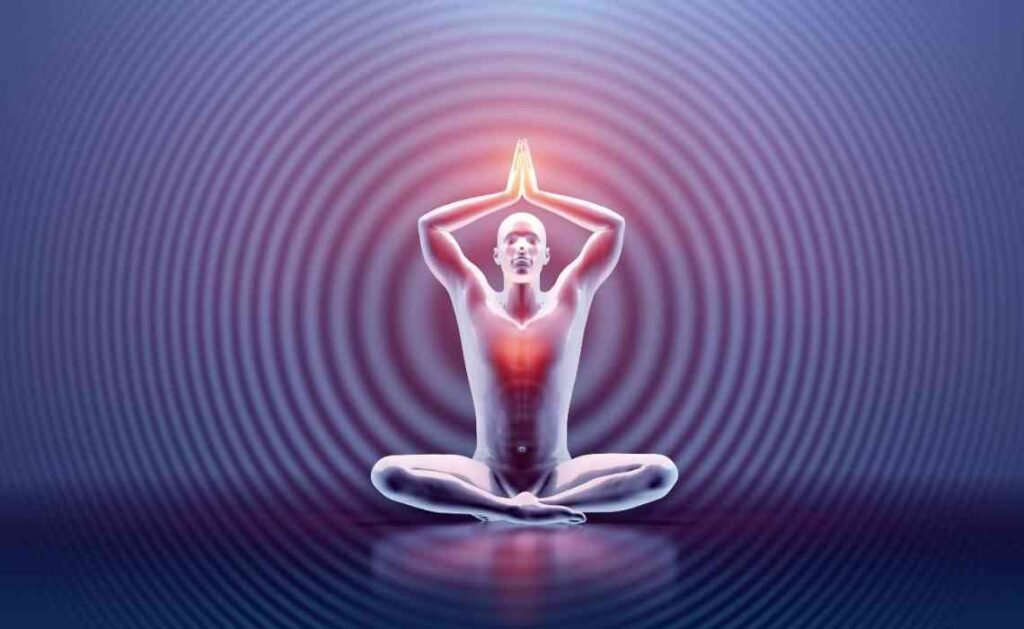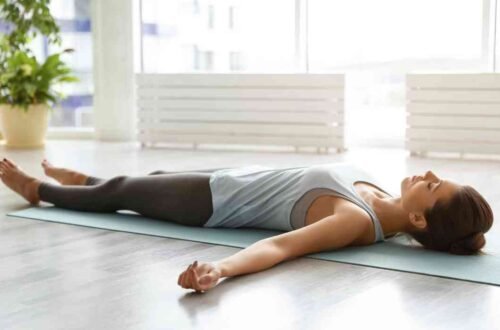
How Exactly Do You Practice Meditation? Easy Step-by-Step Guide for Beginners
Meditation might seem mysterious if you have never tried it before. Some people think it is only for monks sitting on mountains. But meditation is something anyone can do, anywhere, even at home or at school. It helps calm your mind, makes you feel more peaceful, and even helps you handle stress better. Let’s dive deep into how exactly you practice meditation in a simple and clear way that even a 10-year-old can understand.
What Is Meditation?

Meditation is a practice where you train your mind to focus and feel calm. It is like a workout, but for your brain. Instead of lifting weights or running, you sit quietly and pay attention to one thing, like your breathing. Over time, this helps your mind become stronger and happier. You will eventually be able to practice meditation effortlessly.
Some people think meditation means “stopping your thoughts.” But that is not true. Thoughts will still pop up, and that’s okay. Meditation teaches you to notice those thoughts without getting stuck in them.
Why Should You Meditate?
Meditation has many benefits for your mind and body. It helps you feel less stressed and more focused. People who meditate often say they sleep better, feel less angry, and are happier overall.
When you meditate, you are training your brain to stay in the present moment. This is very important because most of the time, our minds are busy thinking about the past or worrying about the future. Meditation helps you enjoy life right now.
When Is the Best Time to Meditate?
You can practice meditation anytime you want, but some times are better than others. Many people find it helpful to meditate first thing in the morning. This helps start the day with a peaceful mind.
Others like to meditate before bed to help them relax and sleep better. The truth is, the best time to meditate is whenever you can fit it into your day. Even five minutes can make a difference!
Where Should You Meditate?

You can meditate anywhere that is quiet and where you won’t be disturbed. It could be your bedroom, a corner in the living room, or even outside in a park.
You don’t need a fancy setup. Just find a place where you feel safe and comfortable. Some people like to sit on a cushion or chair, but you can also lie down if you want.
What Do You Need to Practice Meditation?
The best thing about meditation is that you don’t need anything special to start. No equipment, no fancy clothes. All you need is yourself and a few minutes of time.
Some people like to use things like a meditation app, soft music, or even a candle to help them focus. But these are optional. The most important thing is your intention to try.
How Exactly Do You Practice Meditation?
Now let’s get to the heart of it. Here is a step-by-step guide that makes meditation easy and clear:
Step 1: Find Your Spot
Pick a quiet place where you feel comfortable. It should be somewhere you won’t be interrupted. Sit down in a way that your back is straight but not stiff.
You can sit on the floor with your legs crossed, or you can sit on a chair with your feet touching the ground. Rest your hands on your lap or knees.
Step 2: Close Your Eyes Gently
Closing your eyes helps you avoid getting distracted by things around you. But if you don’t want to close your eyes fully, you can just lower your gaze.
Some people like to keep their eyes a little open, focusing softly on one spot. Do whatever feels most comfortable for you.
Step 3: Take a Few Deep Breaths
Start by taking a few deep breaths. Inhale slowly through your nose and fill your lungs completely. Then exhale slowly through your mouth.
Deep breathing helps your body relax and tells your mind that it is time to slow down. You can think of it like pressing the “pause” button on a busy day.
Step 4: Focus on Your Breathing
Now, breathe normally and just pay attention to your breath. Notice how the air feels as it goes in and out of your nose.
You might feel the coolness of the air when you breathe in and the warmth when you breathe out. This simple focus is the anchor that keeps your mind steady.
Step 5: Notice When Your Mind Wanders
It’s normal for your mind to wander. Maybe you will think about what’s for dinner or remember something funny. That’s okay!
When you notice that your mind has wandered, gently bring your attention back to your breathing. You don’t have to be hard on yourself. It’s like gently guiding a puppy back to its path.
Step 6: Keep Going for a Few Minutes
At first, try meditating for 5 minutes. You can set a timer so you don’t have to keep checking the clock.
As you get more comfortable, you can slowly increase the time to 10, 15, or even 20 minutes. The important thing is not how long you meditate but how often you do it.
Step 7: End Your Meditation Gently
When your timer goes off or when you feel ready to stop, slowly bring your attention back to the room. Wiggle your fingers and toes a little.
Open your eyes and take a moment to notice how you feel. Try to carry that calm feeling with you as you move through your day.
Common Types of Meditation
There are many styles of meditation. Here are a few simple ones you can try:
Mindfulness Meditation: You pay attention to what is happening right now without judging it. If you are breathing, you just notice your breathing.
Loving-Kindness Meditation: You think about sending love and kindness to yourself and others. It helps you feel more connected and happy.
Body Scan Meditation: You slowly move your attention through different parts of your body, noticing any sensations. This is great for relaxing deeply.
Guided Meditation: You listen to someone guide you through a meditation. This can be a recording, a video, or even an app.
Each style has its own flavor, so you can try different ones and see which you like best.
Tips to Make Meditation Easier
Be patient with yourself. You won’t become a meditation master overnight, and that’s completely fine. Meditation is a journey, not a race.
Try to meditate every day. Even a few minutes each day can make a big difference over time. It’s better to meditate for five minutes daily than for one hour once a month.
Use a timer. Setting a timer helps you relax because you don’t have to worry about checking the clock.
Start small. Don’t pressure yourself to meditate for a long time right away. Build up slowly.
Create a habit. Try to meditate at the same time every day. This makes it easier to remember and turns it into a regular part of your life.
Stay kind to yourself. If you miss a day or find it hard to focus, don’t be hard on yourself. Just come back and try again.
What Happens If You Can’t Focus?
If you can’t focus during meditation, do not worry. Everyone has days when their mind is extra busy. That’s part of the practice.
Instead of getting upset, think of it like “mental push-ups.” Every time you notice your mind has wandered and you bring it back, you are making your mind stronger.
Remember, the goal is not to have a blank mind. The goal is to practice noticing and returning to your focus, again and again.
How Meditation Changes Your Life
Meditation teaches you to be calmer, kinder, and more patient. Over time, you may find that you react less strongly to problems. You might notice that you are more grateful and happy in everyday moments.
Science shows that meditation can even change your brain in good ways. It strengthens the parts of your brain that help with memory, learning, compassion, and staying calm.
You might also notice better health. People who meditate regularly often have lower blood pressure, better sleep, and stronger immune systems.
Just Begin
Meditation might sound simple, but it can be very powerful. You don’t need to do it perfectly. You just need to show up and try.
By practicing meditation, you are giving yourself a beautiful gift: the gift of a peaceful and happy mind.





